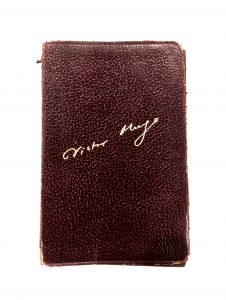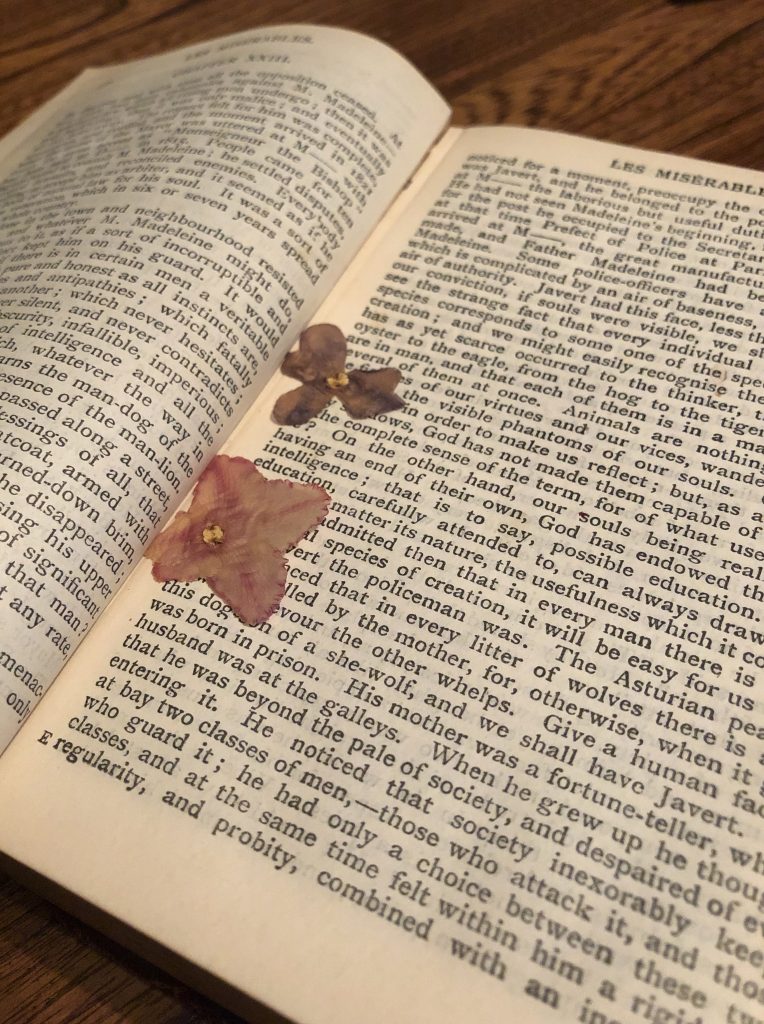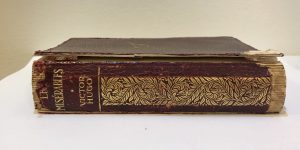
As part of my ARST 587 Preservation course assignments at the iSchool@UBC, I created two preservation reports for a secondhand copy of a pocketbook edition of Victor Hugo's Les Misérables. The first report (found here) involved examining and documenting the materials and technologies of the book. This report describes the physical attributes and physical condition of the book. The second report (found here) involved identifying and evaluating various causes of damage and deterioration to the book.
These reports allowed me to be hands-on and gain hard skills in collections preservation. Having my own book to examine and evaluate, rather than just examples and descriptions on lecture slides or in textbooks, gave me a greater understanding of preventative and remedial preservation practices.
In constructing these reports I:
- Gained an understanding of the structures of materials in archives and libraries, which is demonstrated through my use of accurate terminology in my condition description
 Gained knowledge of the damage and deterioration of materials in archives and libraries as demonstrated through my recognition of the susceptibility of an item and evaluation of how its physical condition may impact its historical and intrinsic values
Gained knowledge of the damage and deterioration of materials in archives and libraries as demonstrated through my recognition of the susceptibility of an item and evaluation of how its physical condition may impact its historical and intrinsic values- Obtained knowledge and experience in the careful handling, storage, and display of collections, which I have been able to apply in professional experiences, such as in my position as the Collections Management Assistant at Murney Tower National Historic Site Museum
- Conducted a thorough examination and evaluation of the book, which resulted in equally thorough yet concise reports
- Adapted my normally academic and verbose writing style to a clear and concise report style
- Made decisions regarding formatting (the use of bullets, tables, white space, images, etc.) and content with the reader in mind, which lends to the "flow" and easy navigation of the reports
